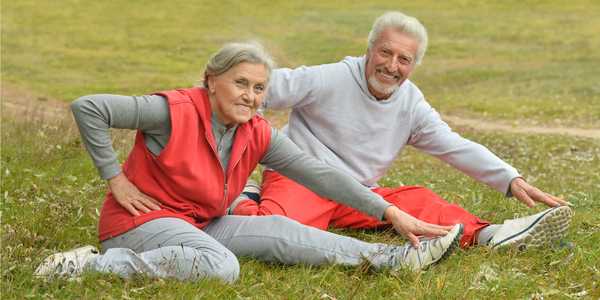
PEAK LONGEVITY BENEFIT WITH ONE HOUR OF DAILY EXERCISE
A new study by Arem et al published in JAMA Intern Med has reported that people who engaged in three to five times the recommended minimum level of leisure-time physical activity derive the greatest benefit in terms of mortality reduction when compared with people who do not engage in leisure-time physical activity.
The 2008 Physical Activity Guidelines for Americans, developed by the Department of Health an Human Services’ Physical Activity Guidelines Advisory Committee, recommend a minimum of 2.5 hours of moderate-intensity exercise per week or 1.25 hours of vigorous aerobic activity, but more activity is encouraged for additional health benefits.
Before this study, experts did not know how much additional health benefit might accrue for those doing more exercise. This study confirms that much of the mortality benefit is realized by meeting the minimum recommended levels of physical activity and describes the increased mortality benefit associated with higher levels of physical activity.
Hannah Arem, Ph.D., Division of Cancer Epidemiology and Genetics, National Cancer Institute and her colleagues studied data from over half a million men and women in the United States and Europe who reported on their leisure-time physical activities, which included walking for exercise, jogging/running, swimming, tennis/racquetball, bicycling, aerobics and dance.
The investigators also factored in data such as race/ethnicity, education, smoking status, history of cancer, history of heart disease, alcohol consumption, marital status and body mass index. Their findings which will help inform healthcare professionals included the following:
1. Engaging in one to two times the recommended minimum level of leisure-time physical activity (i.e. 2.5 to 5 hours of moderate-intensity activity, such as walking, or 1.25 to 2.5 hours of vigorous-intensity activity such as running) provided much of the observed longevity benefits- a 31% lower risk of death compared with people who did no leisure-time physical activity.
2. At three to five times the recommended minimum level of leisure-time physical activity the benefit appeared to level off at a 39% lower risk of death, compared with those who did no leisure-time physical activity. This level of exercise could be achieved by:
A) walking 7 hours per week
B) biking leisurely 5 hours per week
C) running at a 10 minute/ mile pace for 2.25 hours per week
3. At ten or more times the recommended minimum level of leisure-time physical activity there was no additional mortality benefit, but there was also no increased risk of death.
Article Source
1. Arem H et al. Leisure time physical activity and mortality: A detailed pooled analysis of the dose-response relationship. JAMA Intern Med 2015;175(6):959-967.
2. National Cancer Institute, USA.